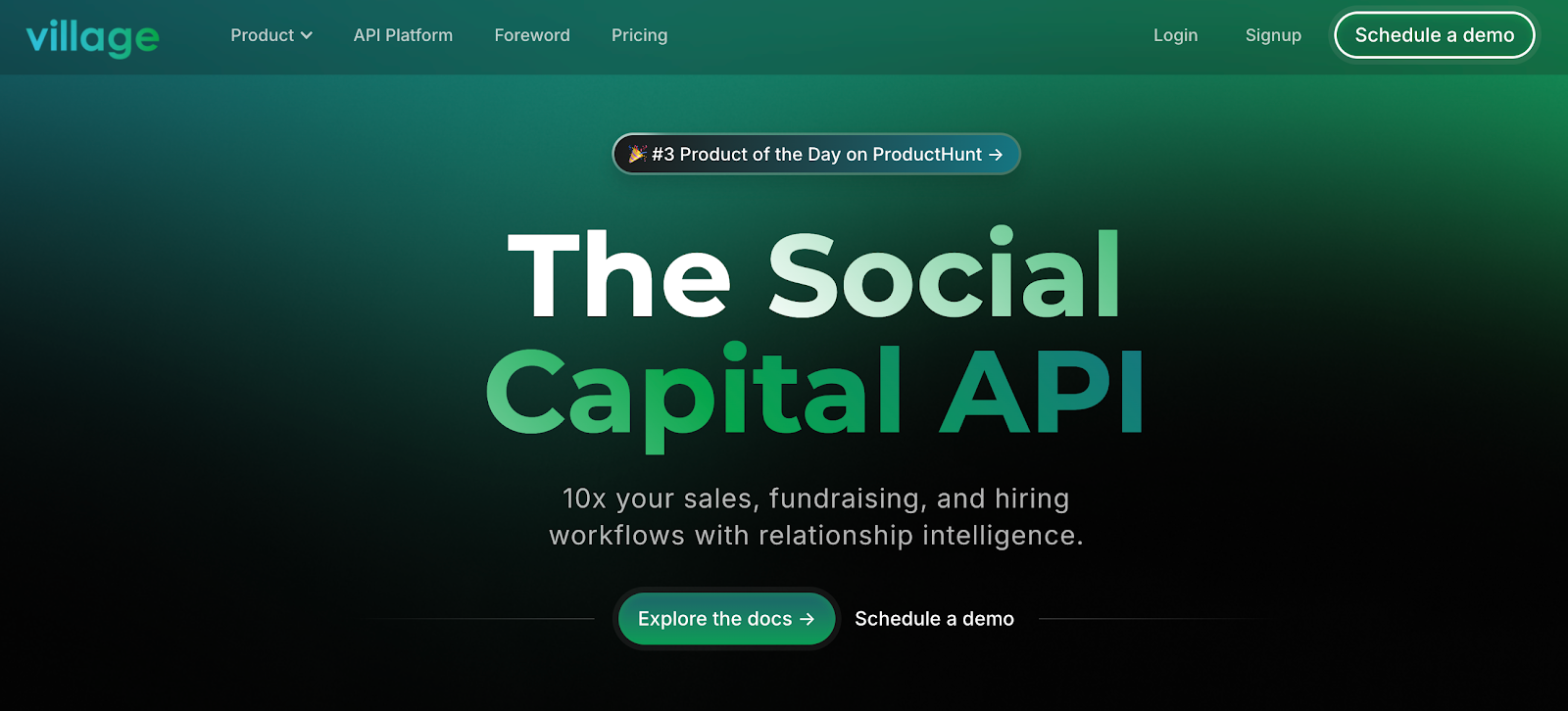Cold calling isn’t just outdated; it’s ineffective. Most people ignore unknown numbers, and when they do answer, they’re rarely interested in hearing a pitch from a stranger.
Sales teams using a consistent sales process, founders, and business development professionals need better ways to start conversations. Methods that feel more natural, more personal, and far more likely to convert.
You no longer have to rely on cold calls to generate leads or book meetings. There are smarter, higher-converting alternatives that match how modern buyers prefer to engage.
In this guide, we’ll walk through eight cold calling alternatives that actually work.
Why Sales Teams Are Moving Away From Cold Calling
Cold calling used to be a traditional sales technique, but that has changed. Now, most people screen unknown numbers, ignore voicemails, and rely on their own research before they’re ready to talk. Sales reps notice the difference.
Fewer conversations lead somewhere, and the time spent dialing often feels wasted. Even when someone does answer, building trust in a cold conversation rarely happens.
The problem goes both ways. Prospects don’t like being caught off guard, and reps don’t enjoy making calls that go nowhere. It wears everyone down without moving deals forward.
So, is cold calling dead? Not entirely, but for many teams, it’s no longer the go-to method for starting conversations that convert.
That’s why more teams are exploring alternatives. They’re looking for outreach strategies that feel more natural and are easier to scale.
What Makes a Cold Calling Alternative Effective?
Cold calling still happens, but it rarely leads to productive conversations. Most people ignore unknown numbers. The few who do answer usually aren’t in the mood for a pitch.
Other approaches work better when they match how people prefer to engage. Instead of catching someone off guard, you're reaching out with context and a reason to start a conversation.
Focus on Context
You’re not sending messages into a vacuum. The more context you bring to your outreach, the better your chances of getting a reply.
That means paying attention to someone’s role, their company’s stage, recent news, or even a comment they made on social media platforms. These details help shape a message that makes sense to them.
Reach Out When Interest Is High
Some buyers leave signals when they’re in research mode. They might visit your site, download a resource, or click on an ad. Others appear in industry conversations or show up in analytics.
Many teams also conduct keyword research to find what their audience is searching for. These moments help you reach out when there’s already some level of interest.
Choose Channels That Match Audience Behavior
Some people check their email often. Others respond faster in Slack groups or engage on LinkedIn or Reddit.
When you reach out on platforms they already use, the message feels more familiar. It doesn't interrupt their routine. Instead, it becomes part of their day-to-day activity.
Stick to a Consistent Process
You don’t need to get everything right the first time. What matters is having a system that helps you follow up, track replies, and make changes as you go. That might mean logging notes after a call, sending a follow-up a few days later, or adjusting your message based on recent feedback.
8 Cold Calling Alternatives
If you're ready to move away from cold calls, there are better ways to reach prospects. These approaches give your team a prospecting strategy that aligns with how people want to connect today.
Below are eight cold calling alternatives that help you connect with people better.
1. Warm Email Outreach Using Village
Cold calling puts you in front of people who don’t know you and probably don’t want to hear from you. Village flips that experience. It helps you reach prospects through shared connections, so you’re not showing up uninvited.
Instead of pulling a list and guessing who to contact, you can search for a specific person and see how you’re already connected, either directly or through someone on your team. It’s an outreach strategy built on trust and relevance.
Village syncs with your contacts, calendar, and LinkedIn to map your personal and team network. Then, it shows you paths to the people you want to talk to and helps you request introductions directly through the platform.
You get:
- Access to warm paths across 700M+ profiles and 30M+ companies
- Scoring based on connection strength, context, and shared history
- Built-in email and intro templates to simplify outreach
- Double opt-in functionality to keep intros respectful
- Shared boards to coordinate with your team
Instead of cold pitching, you’re being introduced by someone the recipient already knows. That simple shift increases the chance of a positive response and a more open exchange.
How Village Helps Start Meaningful Outreach
Say you want to talk to a director at a logistics software company. You search their name in Village. The platform shows a warm second-degree connection through a teammate’s former colleague.
You send a quick request, your teammate agrees to introduce you, and the conversation begins with context and shared background.
Pricing and Access
Village offers a free trial with basic access to your network and a limited number of intro requests. The platform offers three paid plans:
- Essentials ($19/month): Includes unlimited AI-powered search, access to one investor network, one private or team board, unlimited intro requests, ten screened results per search, and up to three warm intro paths per person
- Pro ($39/month): Includes everything from the Essentials plan plus unlimited portfolio networks, private boards, quality screened results, and up to six warm intro paths
- Premium ($119/month): Includes everything in the Pro plan plus third-degree team search, access to API and team talent network, and unlimited warm intro paths.
It only takes a few minutes to sync your data and start seeing connections you can act on. For sales teams, recruiters, or fundraisers, Village makes outreach feel more natural and less random.
Try Village for free! Explore your network, find warm paths, and test intro workflows before committing. If your team builds a pipeline through relationships, Village helps you do it faster and more intentionally.
2. Social Selling on Platforms Like X, Reddit, and Slack
Social selling creates stronger connections, leads to warmer outreach, and brings in more qualified leads without relying on cold calls.
Modern buyers don’t just search Google anymore. According to G2, many turn to platforms like Reddit and G2 to validate solutions and read honest feedback from real users. These spaces give sales professionals a chance to engage authentically without sounding overly promotional.
Think of social selling as social media marketing that focuses on conversation and value instead of broadcasting.
Where to Spend Your Time
- Reddit: Subreddits like r/sales, r/startups, r/marketing, and niche communities are full of pain points you can speak to.
- Slack groups: Private communities like RevGenius, Sales Hacker, and Pavilion are active daily with referrals, tool discussions, and real-time feedback.
- X (Twitter): Founders, operators, and sales leaders share insights about their workflow, tools, and challenges. Responding with relevance opens doors for deeper conversations.
Let’s say you want to reach early-stage SaaS founders.
You join a Slack group focused on startup growth. Someone asks about sales automation tools. You reply with a quick overview of what worked for your team and include a link to a comparison you’ve written.
A few days later, they message you directly to keep the conversation going.
By the time you follow up, they already recognize your name. You’ve built a small amount of trust without making a pitch.
3. Content Marketing for Inbound Leads
A strong content marketing strategy helps you attract prospects who are already looking for answers. When someone discovers your blog, case study, or video through a search or a shared link, the conversation starts on better terms. They’re already curious about the problem you’re solving.
The global content marketing industry is valued at $600 billion. Companies are investing heavily because it works. People are more likely to trust a helpful guide they discovered themselves than an unexpected sales pitch.
Here are a few content formats that consistently attract qualified leads:
- Blog posts that walk through common roadblocks or questions
- Case studies that show what changed after using your product or service
- Short, clear videos that explain your approach or process
- LinkedIn posts that focus on one tip, mistake, or real-world example
Example: Speaking Directly to Sales Ops at SaaS Companies
Let’s say you want to connect with sales operations managers at growing SaaS companies.
You publish a blog titled “How to Shorten the Sales Cycle Without Expanding Headcount.” In it, you include client data, a simple checklist to help readers review their sales process, and a short explainer video.
Then, you share the blog in a sales-focused Slack group. Later, you link to it in a follow-up email after a conversation.
The content gives people a reason to keep engaging with you. It also becomes something they can easily forward to teammates, helping your message spread organically.
4. Paid Ads With Targeted Landing Pages
Paid ads give you a direct line to people who are already looking for solutions. Instead of waiting for organic discovery, you can get in front of your target audience with a message that matches their current search or interests.
The average conversion rate for Google Ads is 6.96%. This means about seven out of every hundred ad clicks result in a lead or action. With clear targeting and messaging, paid ads can be a reliable way to generate momentum.
Just make sure that the ad and landing page work together. When someone clicks, they should land on a page that answers their question or helps them move forward without confusion.
How to Build a High-Converting Ad and Landing Page
Start with the message. Make sure your ad copy mirrors what your audience is searching for. If the ad promotes a specific use case or offer, the landing page should carry the same message all the way through.
Keep the page focused. Avoid distractions like extra links or unrelated content. Everything on the page should support a single goal, whether that’s scheduling a demo, downloading a resource, or signing up for a trial.
Loading speed matters, too. If your page takes too long to load, most visitors will leave before they even see what you’re offering. Test your mobile experience and page speed before launching your campaign.
5. Referrals and Customer Advocacy
Referrals often outperform cold outreach because trust is already built into the connection. When someone hears about your product or service from a peer, it doesn’t feel like a pitch. It feels like advice worth exploring.
In 2025, 84% of B2B buyers say they start the buying process with a referral. It’s an effective way to attract potential customers without starting from scratch.
To make referrals happen more often, you don’t need an elaborate program. You need to ask at the right time and make it easy for your customers or partners to follow through.
Simple Ways to Drive More Referrals:
- Add a referral request after positive customer feedback or net promoter score (NPS) surveys.
- Offer a small thank-you or bonus when a referral leads to a meeting or deal.
- Create a quick form or email template so customers know what to say.
- Encourage your sales team to ask for referrals during onboarding or renewal calls.
Customer advocacy also extends to online reviews, testimonials, and casual mentions on social platforms. A single quote in a LinkedIn post or a short line in a case study can catch the attention of someone else in the same role or industry.
Referral-led outreach starts in a warmer place. The trust doesn’t have to be built from scratch. Your contact arrives with context, and the conversation tends to move forward faster.
6. Webinars and Virtual Events
Webinars give you something most outreach formats don’t: a willing audience.
Unlike cold emails or phone calls, webinars attract attendees who opt in on their own. That shift in context makes it easier to build trust, keep attention, and move conversations forward.
A 2025 report by ON24 found that average webinar attendance climbed to 216 participants per session, up 7% from the previous year. This growth reflects how marketers are using webinars to create interest and move leads closer to action.
Running an effective webinar doesn’t require a studio setup or a large team. What matters most is relevance. Choose a topic that speaks to a real challenge your audience is dealing with right now.
Keep it focused. Deliver practical insights. Give people a reason to participate and follow up afterward.
Webinar Formats That Keep People Engaged
The format you choose matters. Instructional sessions that solve one clear problem tend to perform well. Product walkthroughs followed by live Q&A give attendees a chance to dig deeper into what matters to them.
You can also host panels that feature customers, real users, or industry peers sharing honest experiences. Another strong format is a focused industry discussion that relates to your offer without turning into a direct pitch.
7. SMS and Conversational Marketing
Text messages are harder to ignore and easier to respond to. When used thoughtfully, SMS provides a quick, personal way to check in, confirm interest, or send a short update. It’s casual enough to feel natural but direct enough to grab attention.
Many teams send texts right after someone fills out a form or registers for a webinar. A short, relevant message tied to that action often brings people back into the conversation faster than email.
For example, a simple reminder about a scheduled demo or a follow-up on a question from earlier can open the door to a more focused exchange.
Let Website Visitors Guide the Conversation
Conversational marketing builds on this idea by meeting people where they already are. Live chat or AI tools on your website help visitors get answers without needing to send an email or book a call.
If someone is browsing your pricing page or reading a case study, a prompt can offer help or guide them to the next step.
Both SMS and chat-based tools keep your team responsive. They help start real conversations in real time, without the need for cold calls or impersonal emails.
8. Intent-Based Outreach Using Buyer Signals
Cold lists slow you down. Intent data keeps you focused.
Instead of contacting people at random, you can prioritize those who are already showing signs of interest. A well-timed message based on behavior is often the most effective lead generation strategy you can use.
These signals come from actions people take. Someone clicks an ad. Another person spends several minutes on your pricing page. A third downloads a product comparison guide. Each activity reveals interest and intent.
Use Signals to Guide Your Timing and Message
Let’s say a company visits your site multiple times in one week. All visitors come from people in revenue operations roles. That pattern tells you they are exploring, not just browsing.
Now, you have a reason to reach out. You also know what to say. If Village shows a shared connection, you can request a relevant and well-timed introduction.
Your message should reflect their activity. Instead of sending a generic pitch, refer to what they already saw or downloaded. Offer a short follow-up, a resource, or an invitation to discuss options.
Intent-based outreach works because it meets people where they are. It’s personalized, relevant, and more likely to lead to a conversation.
How to Transition Away From Cold Calling Without Losing Pipeline
If your team has relied on cold calling for a while, switching to new methods can feel risky. But the goal isn’t to stop outreach altogether. It’s to shift toward channels that open more doors and lead to better conversations.
Look at where your leads are coming from, how they engage, and which efforts lead to booked meetings. Testing new tactics, like warm intros, inbound content, or joining networking events, can help you make the shift without complications.
You don’t need to flip your entire strategy overnight. Combine traditional efforts with modern tactics like email campaigns that add value upfront. Village, for example, helps you make contact through shared connections, easing the friction of cold outreach.
Creating and sharing interesting content is another way to stand out. Whether it's a case study or a practical guide, the right piece can keep your name top of mind and warm up the next touchpoint.
Reach People Through Trusted Connections With Village

Cold calling puts pressure on both sides. You’re trying to start a conversation with someone who doesn’t know who you are, and most of the time, they don’t want to engage.
Village takes a different approach. It helps you find people in your network who can make real introductions to the contacts you’re trying to reach. Instead of guessing who to call, you follow paths that already exist.
These warm intros feel more personal and often lead to better conversations. You’re not reaching out as a stranger. You’re coming in through someone they trust.
If you’re ready to move away from cold calls, try Village for free or book a demo. You’ll see right away how much smoother outreach can feel when there’s a real connection behind it.
FAQs About Cold Calling Alternatives
What is the alternative to cold calling?
Alternatives to cold calling include warm email outreach, social selling, content marketing, paid ads, referrals, and webinars. These methods focus on building trust and starting conversations in more natural ways.
What's another way to say "cold call"?
Instead of saying "cold call," people often use terms like outbound calls, phone calls, or unsolicited outreach. However, many teams now focus on warm outreach, which feels more personal and less disruptive.
What is the 80/20 rule in cold calling?
The 80/20 rule suggests that 80 percent of your results come from 20 percent of your efforts. In cold calling, this often means a small number of contacts drive most of your lead generation success.
What are the 3 C's of cold calling?
The 3 C's of cold calling are clarity, confidence, and connection. These help guide how you speak during a call, but they also apply to other outreach tactics like email or search engine optimization (SEO).










